In the contemporary gastronomic landscape, which spans from quaint, intimate cafés nestled in hidden corners to the dynamic, vibrant atmosphere of street food vendors, there exists an escalating demand for pragmatic yet environmentally conscious solutions pertinent to the service of heated culinary delights, most notably soup. Esteemed dining establishments, renowned fast-food franchises, and esteemed event coordinators are ubiquitously in pursuit of the quintessential disposable bowls. These vessels are not merely utilitarian but are also imbued with a commitment to environmental stewardship and aesthetic appeal. They are meticulously sought to seamlessly amalgamate functionality with sustainability, whilst not compromising on sartorial elegance.
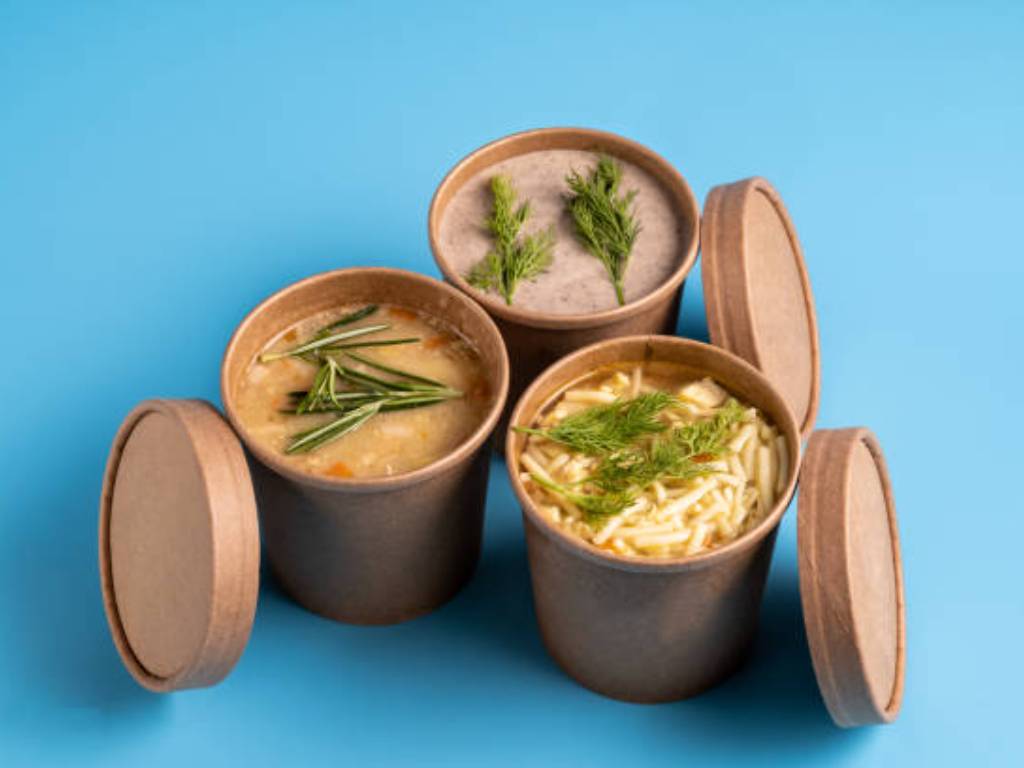
As the proclivity for take-away services and al fresco dining experiences burgeons, these disposable bowls, an integral part of dinnerware, have ascended to a pivotal role. They are instrumental in furnishing patrons with an experience that is not only gratifying to the palate but also resonates with a consciousness of ecological responsibility. Their utility and design have become an essential facet in defining the quality and ethos of the contemporary dining encounter, encapsulating a blend of convenience, environmental mindfulness, and stylistic flair.
What are the Requirements for a Good Disposable Hot Soup Bowl?
- Durability: The bowl necessitates robust construction, capable of sustaining the weight and temperature of hot soup without succumbing to deformation, fracture, or saturation. This characteristic is pivotal to ensure that it can be employed with ease and safety, mitigating the likelihood of inadvertent spillages or leakage.
- Heat Resistance: Paramount to its utility is the bowl’s ability to endure elevated temperatures without experiencing distortion or material degradation. This quality is essential not only for containing hot soup effectively but also for accommodating potential microwave applications.
- Leak-Proof: An exemplary disposable soup bowl should be engineered with features that thwart leakage. This entails a meticulously crafted seal or a design paradigm that guarantees the containment of the soup within the bowl’s confines, irrespective of motion or orientation.
- Eco-Friendly: In an era where ecological considerations are increasingly prominent, premier disposable bowls for hot soup should be fabricated from materials that are benign to the environment. Preferable choices include bamboo, sugarcane (bagasse), or recycled paper, which are superior alternatives to conventional plastic derivatives.
- Compostable/Biodegradable: In an ideal scenario, these bowls should transcend mere sustainable material composition and extend to being fully compostable or biodegradable. This attribute significantly diminishes their environmental footprint post-utilization.
- Microwave Safe: To augment convenience, these bowls should be certified safe for microwave usage. This allows end-users to reheat soup directly in the bowl, obviating the need for transferring the contents to an alternate receptacle.
- Stackable Design: For efficient storage and transportation, especially in bulk scenarios, these bowls should be designed to stack seamlessly and securely. This feature enhances space optimization and facilitates easier handling in both retail and catering environments.
What are the Best Materials for Hot Soup Bowls?
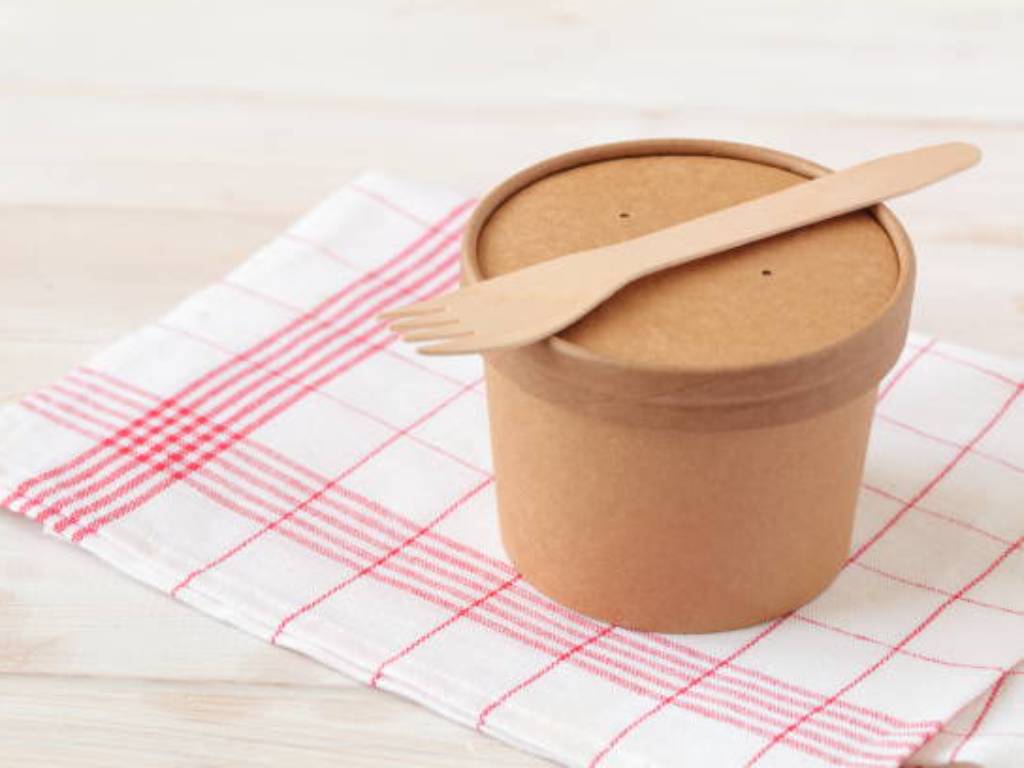
Sugarcane Bagasse:
- Origin: A byproduct of sugar production.
- Properties: Biodegradable and compostable.
- Benefits: Sturdy enough for hot liquids, eco-friendly, and often microwave-safe.
Bamboo:
- Origin: Made from bamboo fibers, a rapidly renewable resource.
- Properties: Compostable and strong.
- Benefits: Offers a unique aesthetic, is environmentally responsible, and holds up well against heat.
Kraft Paper:
- Origin: Produced from natural wood pulp.
- Properties: Often lined or treated for extra durability.
- Benefits: Heavy-duty, capable of handling hot soup without leakage, and recyclable.
Cornstarch-Based Plastics (PLA):
- Origin: Made from fermented plant starch, typically corn.
- Properties: Biodegradable and often compostable.
- Benefits: A more sustainable alternative to traditional plastics, clear PLA can mimic the appearance of plastic for a more upscale look.
Recycled Paper:
- Origin: Made from recycled paper products.
- Properties: Often lined with a bioplastic for leak resistance.
- Benefits: Reduces waste, sustainable, and suitable for a variety of uses.
Polystyrene (Styrofoam):
- Origin: Synthetic polymer made from styrene monomers.
- Properties: Lightweight and insulating.
- Benefits: Very effective for heat retention, but less environmentally friendly.
Polypropylene (PP):
- Origin: A type of thermoplastic polymer.
- Properties: Durable and resistant to heat.
- Benefits: Microwave safe, but not as eco-friendly as biodegradable options.
Types of Disposable Hot Soup Bowls
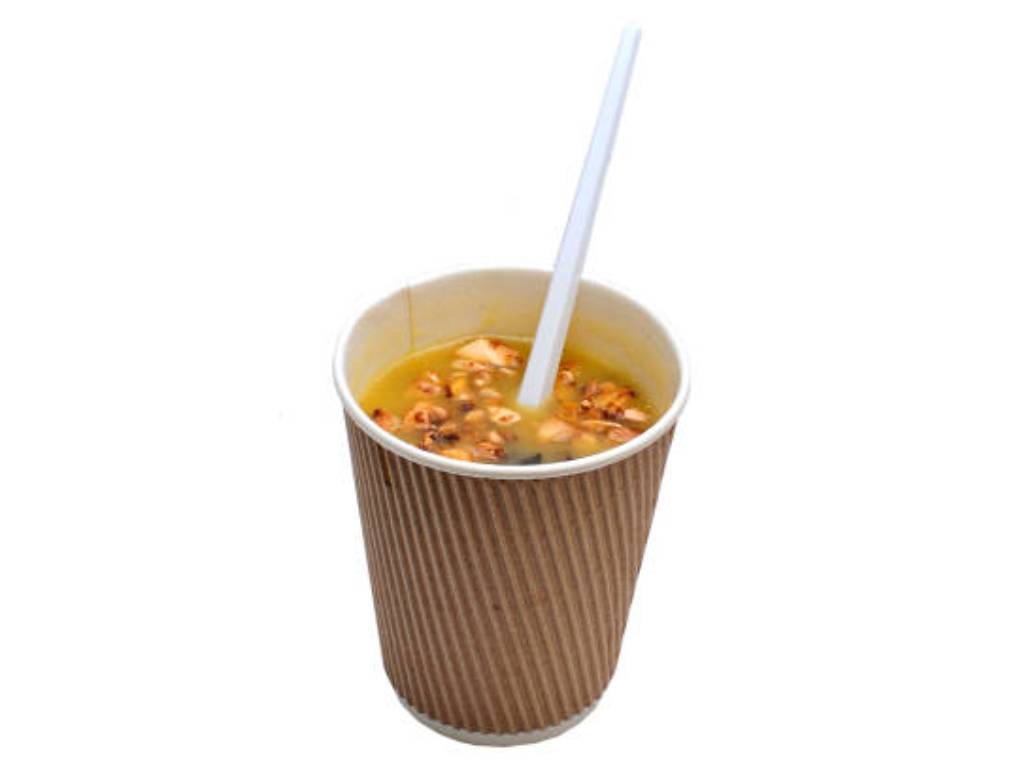
The contemporary market is replete with a diverse array of superior disposable bowls specifically designed for hot soup, each tailored to meet distinct preferences and requirements. The selection ranges from the traditional circular bowls, evoking a sense of classic dining, to contemporary square designs that resonate with a more modern aesthetic. For individuals with an inclination towards environmental stewardship, there are durable disposable bowls crafted from sustainable materials such as bamboo, kraft paper, or sugarcane (bagasse), exemplifying both utility and ecological responsibility when serving hot food.
For those orchestrating upcoming events where a touch of sophistication is desired, the market offers an assortment of disposable bowls that artfully emulate the elegance of fine ceramic tableware. These designs blend the convenience of disposability with an upscale appearance, ensuring that they align with the decorum and aesthetic of more refined gatherings. This fusion of practicality and elegance provides a solution that is both visually appealing and functionally adept, catering to the nuanced demands of various hosting scenarios for your upcoming event.
Microwave Safety of Disposable Bowls
In the realm of culinary reheating, especially for hot soup, the paramountcy of microwave safety cannot be overstated. The epitome of disposable bowls for hot soup transcends mere containment; it encompasses the aspect of reheating efficacy. Prospective buyers should meticulously seek bowls explicitly marked as microwave-safe. Materials such as sugarcane and select grades of robust, heavy-duty paper are frequently conducive to microwave use, thereby guaranteeing that your hot soup is reheated uniformly, while concurrently circumventing any health hazards associated with inappropriate material response to microwave radiation. This careful selection ensures both convenience and safety, adhering to the highest standards of food hygiene and consumer health.
Design and Aesthetics of Disposable Bowls
The design ethos governing disposable paper bowls transcends basic utility, morphing into a potent marketing instrument for savvy businesses. Envision each bowl filled with hot soup not merely as sustenance but as a dynamic medium to manifest a brand’s unique ethos. These vessels offer a canvas for brand embellishment, accommodating logos, artistic motifs, or engaging taglines, thereby metamorphosing them into miniature, mobile advertisements in consumer hands. This branding modality extends its influence beyond the physical confines of the business premises. As patrons transport these bowls, they inadvertently become brand ambassadors, enhancing its visibility.
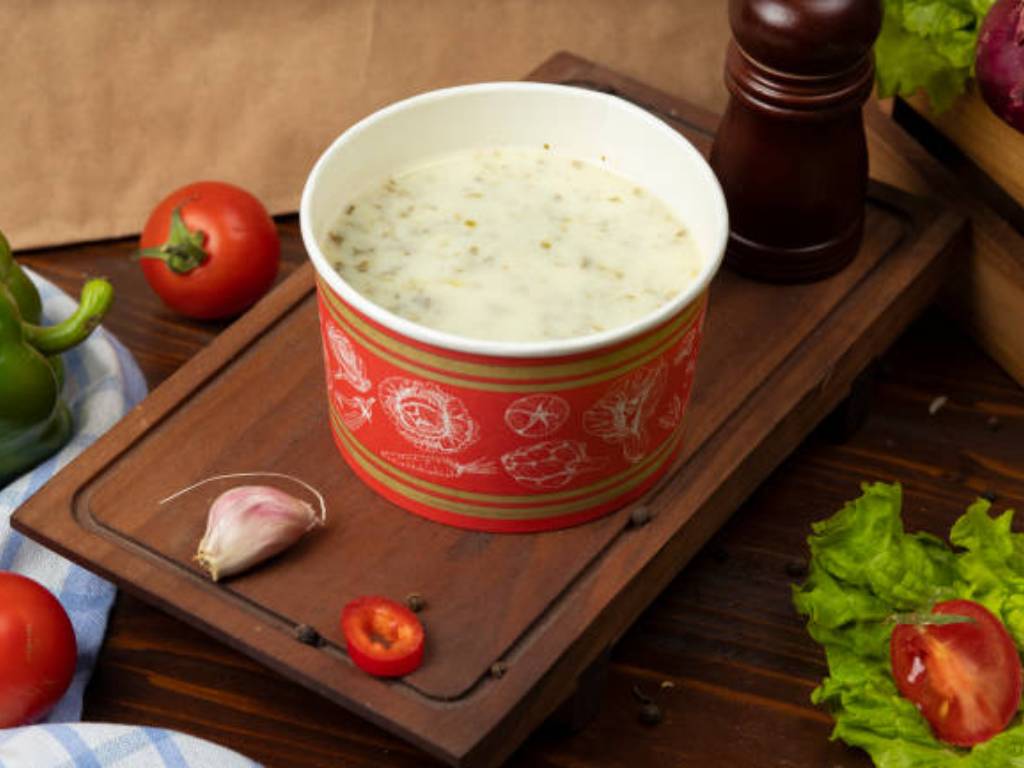
Furthermore, the aesthetic configuration of these paper bowls can be a testament to a company’s ethos, particularly in the sphere of environmental stewardship. In an age where ecological mindfulness is not only esteemed but anticipated, the utilization of recycled or environmentally benign materials in bowl production is emblematic of a brand’s dedication to planetary welfare. This design facet strikes a chord with eco-aware consumers, sculpting a favorable brand perception and nurturing consumer allegiance. Moreover, the malleability in design accords the latitude to swiftly align with prevailing trends, seasonal motifs, or specific celebratory events, maintaining the brand’s relevance and allure. Be it a seasonal motif for holiday festivities or a bespoke design for a community event, these creative decisions ensure the dining experience remains vibrant, appealing, and attuned to the evolving interests and values of the clientele.
Size and Capacity Considerations
| Bowl Size (oz) | Capacity Description | Ideal Use Cases |
| 8 oz | Small, suitable for light servings of soup. | Perfect for appetizer courses, small gatherings, or children’s portions. |
| 12 oz | Medium, a standard size for soup servings. | Ideal for individual servings at restaurants, cafes, or casual home dinners. |
| 16 oz | Large, good for hearty appetites. | Suitable for main courses or larger servings, often used in takeout or delivery services. |
| 24 oz | Extra-large, for very hearty or meal-sized servings. | Best for special occasions, catering events, or when the soup is the main dish. |
| 32 oz | Jumbo size, equivalent to a full meal serving. | Typically used for family-sized servings or for communal sharing at events or buffets. |
Bulk Buying and Storage Tips for Disposable Bowls
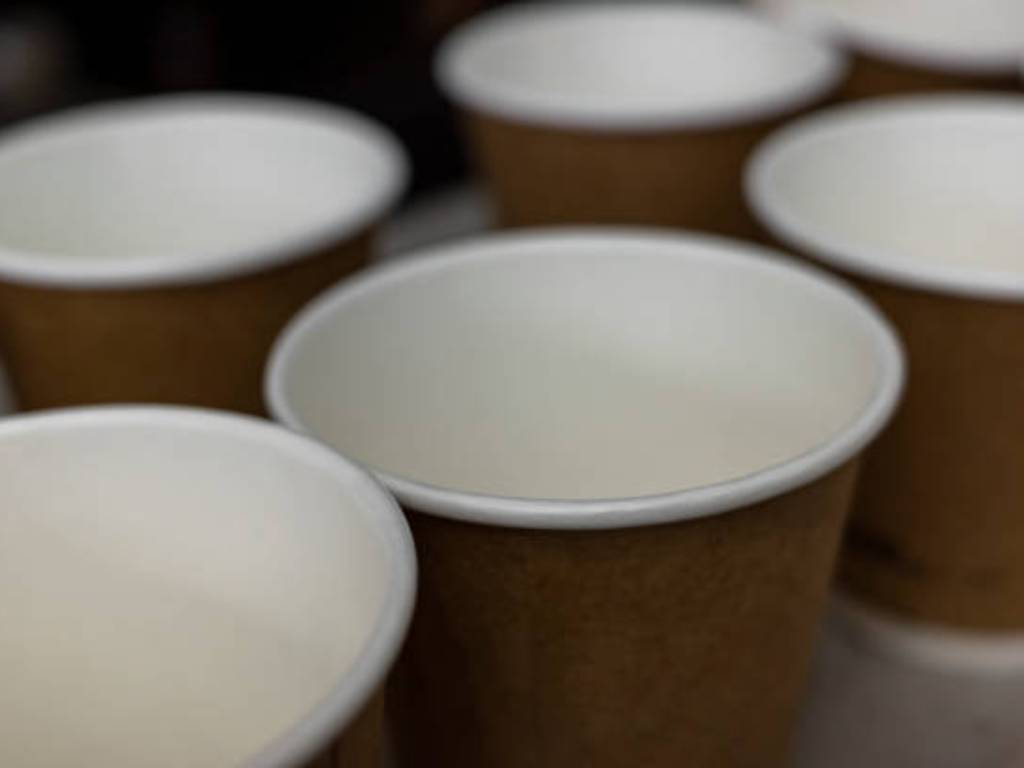
When deliberating on the acquisition of optimal disposable bowls for the containment of hot soups, particularly for commercial enterprises or substantial gatherings, procuring these items in bulk emerges as a judicious strategy. This approach not only guarantees an ample stockpile for immediate or future use, but also frequently offers fiscal advantages. Vendors commonly provide concessions on voluminous orders, rendering this method an economically viable option for culinary establishments, catering services, or event coordinators who consistently require a considerable quantity of robust, heavy-duty bowls.
Nonetheless, the paramount importance of appropriate storage methods to preserve the integrity of these bowls cannot be overstated. The quintessential storage milieu for disposable bowls is characterized by a dry and temperate environment. Such conditions are pivotal in averting moisture-induced deterioration, such as distortion or fungal growth, thereby ensuring the bowls retain their prime quality until their intended use. Furthermore, a significant number of these disposable bowls are ingeniously crafted with stackability in mind. This design ingenuity proves exceedingly advantageous for economizing space – an asset of high value in most culinary preparation areas and storage facilities. The inherent stackability of these bowls not only facilitates efficient storage but also streamlines the procedures of organization and retrieval as necessitated. Adherence to these outlined strategies for bulk purchasing and methodical storage will assuredly maintain your disposable soup bowls in an impeccable state, poised for deployment at a moment’s notice.
Why Wholesale Soup Bowls From YoonPak?

Selecting YoonPak for wholesale soup bowls offers distinct benefits for various food service businesses. YoonPak’s range spans from traditional white paper cups to elegantly designed and clear plastic options, meeting diverse aesthetic and functional needs. Their commitment to environmentally friendly products, using renewable resources and avoiding BPA, aligns with increasing consumer preferences for sustainable packaging. Moreover, YoonPak’s durable, leak-proof containers are suitable for microwave and freezer use, enhancing customer satisfaction. Their customization service, offering personalized colors, logos, and designs, aids in boosting brand recognition. This combination of quality, versatility, and eco-consciousness makes YoonPak a top choice for businesses like fast-food outlets, restaurants, cafes, and catering services in need of practical and attractive soup containers.
Conclusion
In summation, the selection of premier disposable bowls for serving hot soup constitutes a pivotal decision for entities operating within the dynamic realm of takeout food services, fast-food chains, and restaurants. The appropriate choice of bowl not only elevates the consumer experience but also resonates with the operational exigencies of these establishments. In essence, the discernment involved in choosing the most suitable disposable soup bowls hinges on achieving an optimal equilibrium among functional efficacy, ecological stewardship, and the augmentation of the overall culinary experience for patrons across diverse dining environments.







